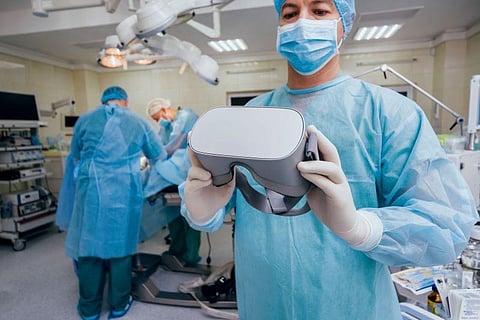WEDNESDAY, Sept. 28, 2022 (HealthDay News) -- Patients using virtual reality (VR) immersion during hand surgery require less anesthesia than those receiving usual monitored anesthesia care, according to a study published online Sept. 21 in PLOS ONE.
Adeel A. Faruki, M.D., of the University of Colorado Hospital in Aurora, and colleagues assessed whether intraoperative VR use reduces sedative dosing during elective hand surgery without detracting from patient satisfaction. The analysis included 34 adults randomly assigned to VR (programming of their choice via a head-mounted display) or usual care.
The researchers found that the VR group received significantly less propofol per hour than the control group (mean, 125.3 versus 750.6 mg per hour). Patients reported similar overall satisfaction (on a 0 to 100 scale: median, 92 for VR versus 100 for control). Similarly, there were no significant differences observed between the groups in postanesthesia care unit pain scores, perioperative opioid analgesic dose, or postoperative functional outcome. Length of stay in the postanesthesia care unit was significantly lower in the VR group (53.0 versus 75.0 minutes).
"Using VR immersion, potentially harmful or unnecessary sedation can be avoided without compromising patient comfort during hand surgery," the authors write. "VR use in similar clinical contexts could potentially minimize sedative-related perioperative complications in vulnerable patients and is worthy of further investigation."
Abstract/Full Text


